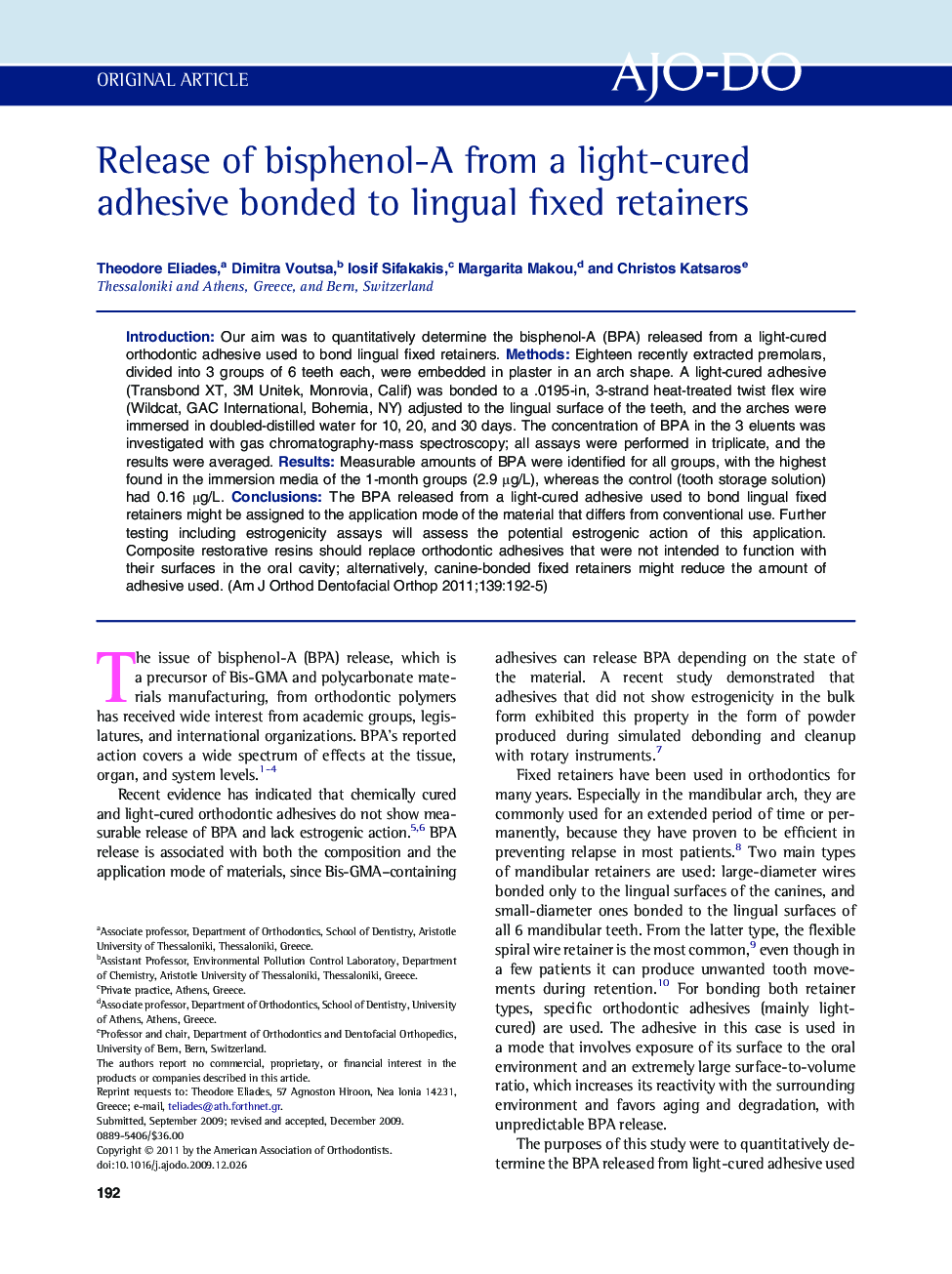| Article ID | Journal | Published Year | Pages | File Type |
|---|---|---|---|---|
| 3117801 | American Journal of Orthodontics and Dentofacial Orthopedics | 2011 | 4 Pages |
IntroductionOur aim was to quantitatively determine the bisphenol-A (BPA) released from a light-cured orthodontic adhesive used to bond lingual fixed retainers.MethodsEighteen recently extracted premolars, divided into 3 groups of 6 teeth each, were embedded in plaster in an arch shape. A light-cured adhesive (Transbond XT, 3M Unitek, Monrovia, Calif) was bonded to a .0195-in, 3-strand heat-treated twist flex wire (Wildcat, GAC International, Bohemia, NY) adjusted to the lingual surface of the teeth, and the arches were immersed in doubled-distilled water for 10, 20, and 30 days. The concentration of BPA in the 3 eluents was investigated with gas chromatography-mass spectroscopy; all assays were performed in triplicate, and the results were averaged.ResultsMeasurable amounts of BPA were identified for all groups, with the highest found in the immersion media of the 1-month groups (2.9 μg/L), whereas the control (tooth storage solution) had 0.16 μg/L.ConclusionsThe BPA released from a light-cured adhesive used to bond lingual fixed retainers might be assigned to the application mode of the material that differs from conventional use. Further testing including estrogenicity assays will assess the potential estrogenic action of this application. Composite restorative resins should replace orthodontic adhesives that were not intended to function with their surfaces in the oral cavity; alternatively, canine-bonded fixed retainers might reduce the amount of adhesive used.
